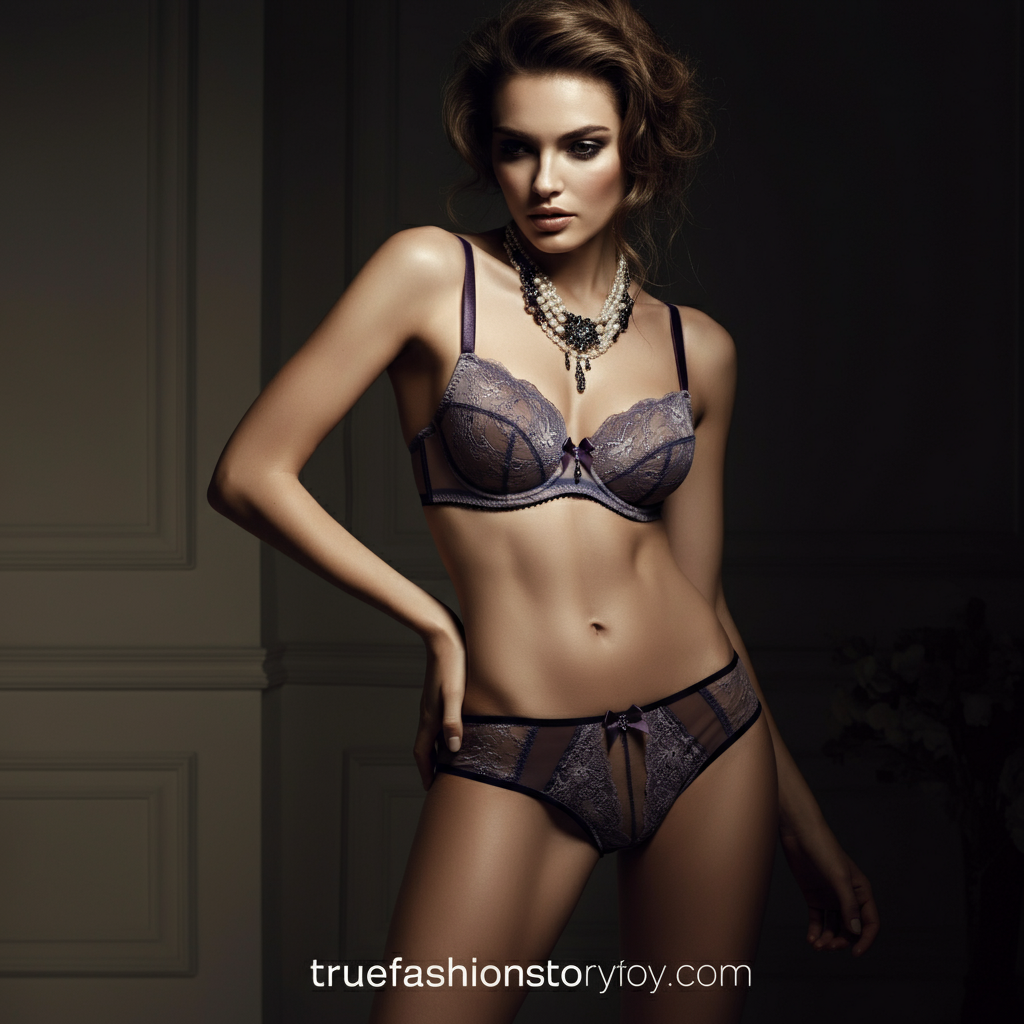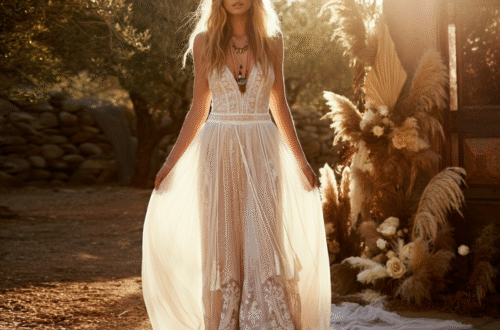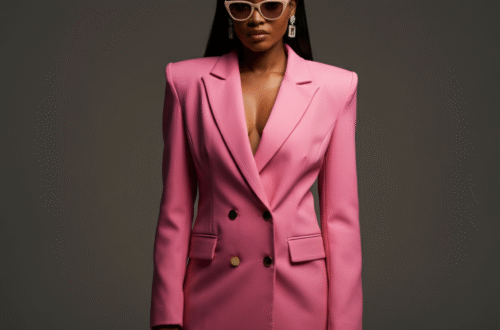Have you ever walked past a store window and wondered about the delicate, often intricate garments displayed inside? The world of lingerie can seem vast and a little mysterious, but at its heart, it’s a fascinating part of fashion history and personal expression. So, what is lingerie? Simply put, it refers to women’s undergarments and sleepwear. But it’s so much more than that. Lingerie encompasses everything from comfortable everyday basics to elaborate, special-occasion pieces. It’s about how fabric, fit, and form come together to create items that can be functional, beautiful, and empowering.
This guide will walk you through everything you need to know. We’ll explore its history, break down the different types, and discuss the fabrics that make these garments special. You will learn the difference between lingerie and regular underwear and find tips on choosing the right pieces for your body and your life.
Key Takeaways
- Lingerie is a broad term for women’s undergarments and sleepwear, ranging from practical basics to decorative pieces.
- The primary difference between lingerie and standard underwear is often the design focus, materials used, and the intended purpose. Lingerie frequently emphasizes aesthetics and special fabrics.
- Understanding different styles like bras, panties, bodysuits, and chemises helps in building a versatile collection.
- Choosing lingerie involves considering comfort, fit, occasion, and personal style. Proper measurements are crucial for a good fit, especially for bras.
- Caring for lingerie, particularly delicate items, by hand washing and air drying will extend the life of the garments.
The History and Evolution of Lingerie
The story of lingerie is a reflection of women’s changing roles in society. It’s a journey from restrictive structures to comfortable and expressive designs. In the past, undergarments were primarily about shaping the body to fit the fashion of the era. Think of corsets from the Victorian age, designed to create a specific hourglass silhouette. These pieces were often stiff, heavy, and restrictive. The focus was purely on external appearance, with little thought given to the wearer’s comfort.
As the 20th century progressed, so did the world of underpinnings. The invention of new, flexible materials and a shift in social attitudes led to more practical designs. During the early 1900s, corsets began to give way to girdles and simpler brassieres. By the mid-century, lingerie started to incorporate more delicate fabrics and feminine details, moving beyond pure function. This evolution shows a clear shift. The answer to what is lingerie has changed from “a tool to shape the body” to “a form of personal expression and comfort.” Today, the industry embraces a huge range of styles, celebrating different body types and personal tastes, a trend you can explore further on blogs like truefashionstory.com.
What is the Difference Between Lingerie and Underwear?
While all lingerie can be considered underwear, not all underwear is considered lingerie. The distinction often comes down to intent, design, and materials. Standard underwear is typically designed with everyday comfort and function as the top priorities. It’s usually made from durable, breathable fabrics like cotton and comes in simple, practical cuts. You wear it for support and coverage throughout a normal day.
Lingerie, on the other hand, often places a greater emphasis on aesthetics. It might be crafted from more delicate or luxurious materials like silk, lace, or satin. The designs can be more intricate, featuring special details like embroidery, sheer panels, or unique strap configurations. While it still serves a functional purpose, lingerie is also designed to be seen and appreciated, whether for a special occasion or just to make the wearer feel good. Understanding what is lingerie involves recognizing this blend of function and fashion. It’s the difference between a plain cotton brief and a lace-trimmed bikini panty—both serve a similar purpose, but their look and feel are worlds apart.
Comparing Lingerie and Everyday Underwear
|
Feature |
Everyday Underwear |
Lingerie |
|---|---|---|
|
Primary Purpose |
Function, comfort, and daily wear |
Aesthetics, special occasions, personal feeling |
|
Common Materials |
Cotton, modal, microfiber |
Silk, satin, lace, mesh, chiffon |
|
Design Focus |
Simplicity, durability, practicality |
Intricate details, decorative elements, fit |
|
Typical Cost |
Generally more affordable |
Can range from affordable to luxury pricing |
|
Occasion |
Everyday activities, sports, work |
Date nights, special events, self-care |
Exploring Different Types of Lingerie
The world of lingerie is diverse, with a style for every occasion and preference. From foundational pieces to elegant nightwear, understanding the different types can help you build a collection that makes you feel confident and comfortable.
Bras: The Foundation of Support
A bra, short for brassiere, is perhaps the most fundamental piece of lingerie. Its main job is to support and shape the bust. But within this category, there is immense variety.
- T-shirt Bras: Seamless and smooth, designed to be invisible under fitted clothing.
- Push-Up Bras: Feature angled cups and padding to lift the breasts and create cleavage.
- Bralettes: Unlined, wire-free bras that prioritize comfort and a natural shape. They are often designed with beautiful lace or straps meant to be shown.
- Strapless Bras: Essential for wearing with off-the-shoulder or strapless outfits, they use silicone grips and a firm band for support.
- Sports Bras: Engineered to minimize movement and provide maximum support during physical activity.
Knowing the different types allows you to choose the right foundation for any outfit.
Panties: Styles for Every Preference
Just like bras, panties come in a vast array of styles, each offering a different level of coverage and a unique look and feel.
- Briefs: Offer full coverage and a classic, comfortable fit.
- Bikinis: Sit lower on the hips with less coverage than briefs, a versatile choice for everyday.
- Thongs: Provide minimal rear coverage to eliminate visible panty lines under tight clothing.
- Hipsters: A popular style that combines the comfort of a brief with the lower rise of a bikini.
- Boyshorts: Offer more coverage, resembling tiny shorts, and are known for their comfort.
Exploring these options helps you understand what is lingerie in its most basic, essential form.
Bodysuits and Teddies
A bodysuit is a one-piece garment that combines a top with a panty, snapping at the crotch. They can be worn as lingerie, as a layering piece under clothing, or even as a top on their own. Teddies are similar but are typically looser, more like a one-piece teddy bear-style pajama, and are usually intended as sleepwear or loungewear. Both styles create a smooth, streamlined silhouette and can be found in everything from simple cotton to intricate lace.
Slips and Chemises
These garments add a layer of elegance and practicality. A slip is worn under a dress or skirt to help it hang smoothly and prevent it from being see-through. They come in half-slip (for the waist down) and full-slip styles. A chemise is a more versatile piece. It’s a short, sleeveless nightgown-like garment that can be worn for sleeping, lounging, or as a layer under clothing. They are often made from silky, comfortable fabrics and trimmed with lace.
Robes and Dressing Gowns
A robe is the perfect finishing touch to a lingerie set or a cozy companion for your pajamas. Ranging from short, silky styles to long, plush fleece gowns, robes add a layer of glamour or comfort. They are perfect for wearing while getting ready, lounging on a lazy Sunday morning, or adding a bit of drama to your evening routine. This piece expands the definition of what is lingerie to include elegant loungewear.
Common Materials Used in Lingerie
The material of a lingerie piece is just as important as its design. It affects the comfort, look, feel, and durability of the garment. Different fabrics offer different qualities, making them suitable for various styles and occasions.
Silk
Silk is the epitome of luxury in the lingerie world. This natural fiber is known for its incredible softness, smooth texture, and beautiful sheen. It feels wonderful against the skin and drapes elegantly. Because it’s a natural protein fiber, silk is also breathable. However, it’s a delicate material that requires careful hand washing and is often more expensive.
Satin
Satin is not a fiber but a type of weave that creates a glossy surface and a dull back. It can be made from silk, polyester, or nylon. Satin offers a similar luxurious look and feel to silk but is often more durable and affordable. It’s a popular choice for robes, chemises, and special-occasion lingerie sets.
Lace
Lace is a decorative fabric that adds an element of romance and intricacy to lingerie. It can be made from various fibers, including cotton, silk, and synthetic blends. There are many types of lace, from delicate Chantilly to bolder Alençon. It is often used for detailing on bras and panties or for entire garments like bodysuits and bralettes.
Cotton
Cotton is a go-to for everyday comfort. This natural fiber is soft, breathable, and hypoallergenic, making it ideal for skin-contact garments. While it’s most common in everyday underwear, you can also find simple, comfortable lingerie pieces like bralettes and briefs made from high-quality cotton, sometimes blended with elastane for stretch.
Mesh and Sheer Fabrics
Mesh is a lightweight, net-like fabric that offers a sheer, teasing look. It’s stretchy and breathable, often used in bodysuits, babydolls, and as panels in bras and panties. Other sheer fabrics like chiffon and organza are also used to create a light, airy, and romantic feel in lingerie.
How to Choose the Right Lingerie for You
Choosing lingerie is a personal journey. The right pieces will not only fit well but also align with your style and make you feel fantastic.
Prioritize Comfort and Fit
No matter how beautiful a piece of lingerie is, you won’t want to wear it if it’s uncomfortable. Fit is the most crucial element. This is especially true for bras. Many women wear the wrong bra size, leading to discomfort and a lack of support. It’s highly recommended to get professionally measured or to learn how to measure yourself correctly at home. For all lingerie, pay attention to how it feels. Does the band dig in? Do the straps slip? Is the fabric itchy? The perfect lingerie should feel like a second skin.
Consider the Occasion
Think about when and where you plan to wear the lingerie. Are you looking for something practical for everyday wear under office clothes? A seamless t-shirt bra and comfortable briefs would be a great choice. Are you shopping for a romantic getaway? Perhaps a lace bodysuit or a silk chemise is more appropriate. For lounging at home, a soft cotton bralette and a cozy robe might be just what you need. Having a variety of styles for different occasions ensures you’re always prepared.
Express Your Personal Style
Lingerie is a wonderful way to express your personal style, even if you’re the only one who sees it. Do you prefer minimalist, modern designs, or are you drawn to romantic, vintage-inspired lace? Do you love bold colors, or do you stick to classic neutrals? Don’t be afraid to experiment. Fashion sites like truefashionstory.com often feature trends and style guides that can provide inspiration. The most important thing is to choose pieces that make you feel like the best version of yourself. When you feel good in your lingerie, it radiates outward.
Conclusion
Understanding what is lingerie opens up a world of fashion that is both personal and powerful. It’s far more than just undergarments; it is a category of clothing dedicated to fit, form, beauty, and self-expression. From its historical roots as a restrictive necessity to its modern status as a symbol of empowerment and style, lingerie has evolved dramatically.
Whether you prefer the everyday comfort of a cotton bralette or the luxurious feel of a silk robe, there is a piece of lingerie out there for you. By learning about the different types, materials, and how to choose the right fit, you can build a collection that supports you, feels amazing, and lets your personal style shine. The next step is to explore what’s out there. Take your measurements, think about what makes you feel good, and start building a lingerie wardrobe that is uniquely yours.
Frequently Asked Questions (FAQ)
Q1: How often should I buy new bras?
A1: Most experts recommend replacing your everyday bras every 6 to 12 months. Over time, the elastic wears out, and the bra loses its supportive qualities. However, the lifespan depends on how many bras you have in rotation and how well you care for them.
Q2: What is the best way to wash lingerie?
A2: Hand washing in cool water with a gentle detergent is the best way to care for delicate lingerie, especially items with lace, silk, or underwire. Avoid twisting or wringing them out. Gently squeeze out excess water and lay them flat or hang them to air dry. Never put delicate lingerie in the dryer, as the heat can damage the fabric and elastic.
Q3: What is a “babydoll” in lingerie terms?
A3: A babydoll is a short, loose-fitting nightgown or negligee. It typically has a fitted bodice that ends just below the bust and a loose, flowing skirt that hits around the upper thigh. It is often sold as a set with matching panties and is considered a popular style of playful, romantic lingerie.
Q4: Can I wear a bralette if I have a larger bust?
A4: Absolutely! Many brands now design bralettes specifically for larger cup sizes. Look for styles with wider straps, a wider band, and sometimes light boning or structured seams for added support without an underwire. These designs provide the comfort of a bralette with the support needed for a larger bust.
Q5: What is the point of wearing a slip?
A5: A slip serves several purposes. It helps a dress or skirt hang smoothly without clinging to your body or hosiery. It also provides an extra layer of opacity for slightly sheer clothing and can prevent irritation from rough fabrics like wool. It’s a classic lingerie item that adds a polished finish to an outfit.





